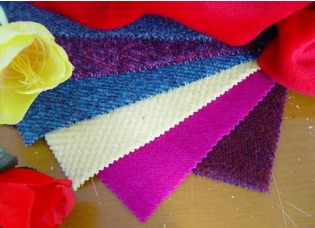 Affected by the rebound in demand, the port has a phenomenon of “grabbing flowersâ€. Textile companies hope that cotton will be thrown away, and they are looking for additional quotas. At the same time, due to the implementation of the new national standard, the domestic cotton price increased implicitly. In addition, the US government’s impact on closing and shutting down the market for the past half month, the international cotton price continued to fall, the difference between domestic and foreign cotton prices expanded, and the domestic cotton purchase and storage progress was also significantly accelerated.
Affected by the rebound in demand, the port has a phenomenon of “grabbing flowersâ€. Textile companies hope that cotton will be thrown away, and they are looking for additional quotas. At the same time, due to the implementation of the new national standard, the domestic cotton price increased implicitly. In addition, the US government’s impact on closing and shutting down the market for the past half month, the international cotton price continued to fall, the difference between domestic and foreign cotton prices expanded, and the domestic cotton purchase and storage progress was also significantly accelerated. 1. Exports continue to rise, and benefits have increased rapidly. Affected by the slow recovery of the European and American markets and the decline in the base last year, China's textile and apparel exports have continued to grow this year. According to the latest customs statistics, from January to September, China's textile and apparel exports were US$209.479 billion, an increase of 12% year-on-year (only 0.5% growth last year), of which textiles increased by 11.5% and clothing rose by 12.3%. However, due to the unstable pace of recovery and the magnified base after September last year, the growth rate of exports in September fell from July to August. In September, textile and apparel exports were US$26.584 billion. The growth rate increased by 15.8% and 14%, respectively, in the months of July and August, and declined to 5.8% year-on-year, which was a decrease of 5.2% from the previous month.
The growth of profits has been accelerating, but the unit's efficiency has been low. Affected by the continuous decline in efficiency last year and the warming of the situation this year, textile profit growth accelerated. According to statistics from the National Bureau of Statistics, from January to August this year, the textile and apparel industry realized a profit of 179.79 billion yuan, a year-on-year increase of 16.3%, of which the textile industry increased by 18.9%. %, the apparel industry grew by 10.8%, and the chemical fiber industry increased by 22%. However, the profit margin is low, especially in the chemical fiber industry. From January to August, the average sales profit rate of the industry was only 4.6%, including 4.77% in the textile industry, 5.08% in the apparel, and 2.6% in the chemical fiber.
2. Accelerate the progress of purchase and storage after the holiday, and the purchase price rebounded. As of the end of October 12, the country’s cumulative total reserves of 245,200 tons, a decrease of 68.3% year-on-year. Of which, 163,300 tons (accounting for 67.8%) of Xinjiang deposits fell by 69.2%, while Hubei, Hebei, and Shandong each only deposited more than 10,000 tons, which was a drop of nearly 80% from the previous year. It is worth mentioning that after the holiday period, the progress of storage and storage has been markedly accelerated. On 8-12 days, the average daily storage and storage capacity was 28,900 tons, which was 1.6 times of the average daily turnover in September. Due to the recovery of reserves, the purchase price of seed cotton increased from the average of 4.25 yuan/kg before the holiday to about 4.3 yuan/kg, and the cost of discounted cotton was approximately 19,600 yuan/ton, which was nearly 1,000 yuan more than before the holiday. The figure for cotton collection and storage for this year is as follows:
3, the lack of information guidance, the international cotton prices fell, the spread between domestic and foreign spreads. October 1st was the beginning of the U.S. government's new fiscal year. Since the two houses of the U.S. Congress could not reach an agreement on the next year's government budget before the deadline, the U.S. government announced that it had stopped operating on October 1, 2013. Closed for nearly half a month. Due to the government's suspension of business, the routine release of the USDA's export, export, and annual forecast report ceased to be released one after another, leading to an unclear market direction and post-holiday prices continuing to decline. According to statistics, post-holiday New York cotton fell by 384 points from 87 cents/lb to 83 cents/lb. The Cotlook A Index fell from 92.65 cents/lb to 89.4 cents/lb, down 4.5%. In addition to the implementation of new cotton standards in China (from the current situation, the new national standard on the one hand, invisibly increased the price, on the other hand due to the spread of the quality of the price difference, price fluctuations are greater), according to still adaptable varieties (3128B and the original 328B Compared with the grade level, the new grade price is about 300 yuan/ton more invisible than the original grade price. The difference between the domestic and foreign cotton price before and after the stop price has expanded from 3720 to 4580 yuan at the end of September to 4460 to 5470 yuan, an average increase of 730 to 900 yuan.
Due to the difference between cotton prices inside and outside the country, and the acquisition of cotton by the acquiring companies, the cotton stocks in the spinning enterprises are not much (most of which are maintained at the end of October or mid-November). The textile companies hope that the country will throw out storage and additional quotas to ease the upcoming shortage of cotton resources. .
Dust Mask,Face Cover,Logo Face Cover,Dust Protecting Mask
SHAOXING CHUANGDONG TOUR ARTICLES CO.,LTD , https://www.flagnshow.com